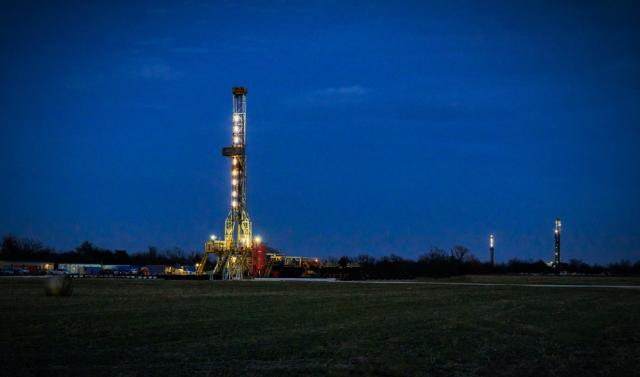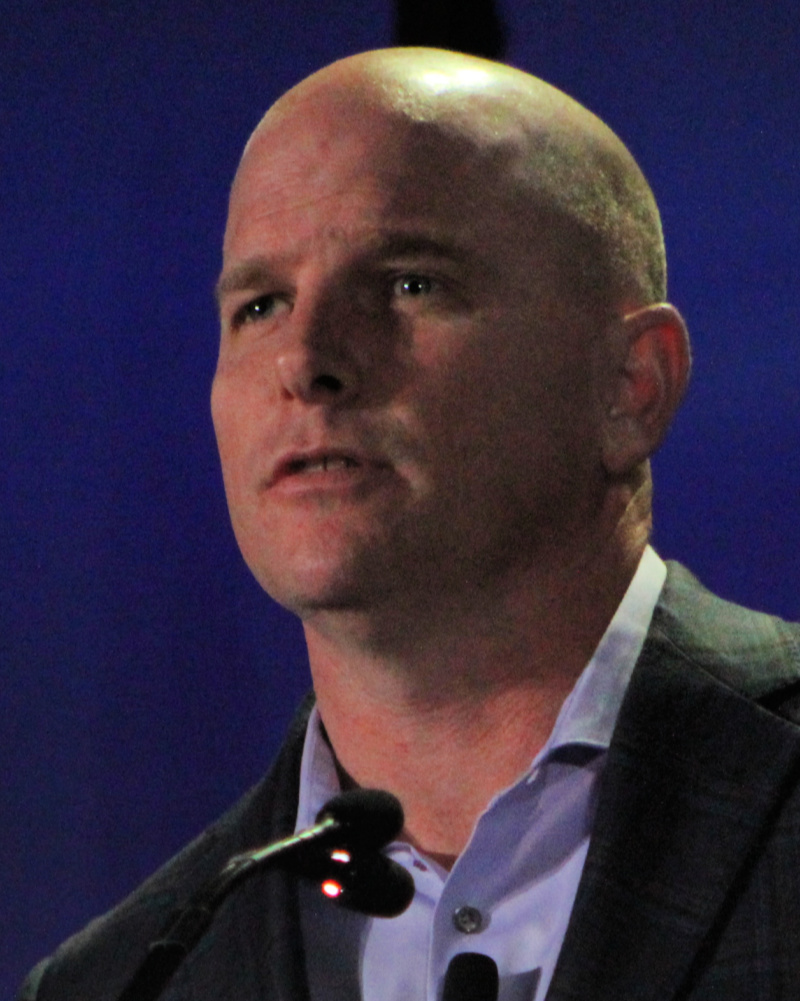
Chaparral Energy is a pure-play operator focused in Oklahoma’s Stack and Merge play, where it has approximately 129,000 net acres primarily in Kingfisher, Canadian and Garfield counties. (Source: Chaparral Energy Inc.)
OKLAHOMA CITY—Some oil and gas operators in Oklahoma’s Stack-area were going too fast when parent/child issues weren’t understood yet leaving the play’s reputation in recovery now, according to Scott Pittman, CFO, Chaparral Energy Inc.

“At some point, people will start to believe there are differentiating companies within the Stack,” Pittman told attendees at Hart Energy’s recently held DUG Midcontinent conference.
A pure-play horizontal Meramec- and Osage-formation developer, most of Chaparral’s more than 200,000 surface acres—with about 130,000 net—is HBP by old, legacy verticals. It was less driven by the need to HBP while the Stack rose in prominence during the past five years among U.S. oil plays.
“It has given us a chance … to develop at a reasonable pace,” Pittman said. “I think one of the items the Stack and [adjacent] Merge has been a victim of is pace,” he said.
In 2018 and into 2019, having transitioned to multi-well pads in sections, it came to better understand parent-well/child-well issues. “Our understanding has really started to differentiate [us from others] who may or may not have stubbed their toes” as they were drilling multiwell pads “at a pace that may have been in front of what was their understanding of the play.”
Generally, IP-30s aren’t much of an indicator of a well’s ultimate performance. Going quickly can accelerate returns or can belatedly indicate uneconomic returns.
“2018 is really where the Stack got a bit of negative publicity from a number of different companies,” he noted. It was due to the pace. “This was a play that was still in a delineation phase rather than a development mode. A number of companies were throwing a large amount of rigs at it very quickly and over-spacing.”
‘Isn’t Just Math’
IP-90s are needed for a better picture. The IP-30s may have been good, but “it was the IP-90s that really matter.” It takes 30 days to drill and complete a well with one rig. “It takes another 30 days to see the IP-30 and another 30 to see the IP-60 before you think you have a problem.”
Pittman said it is at IP-90 you realize you have an issue.
Instead, “if you go slowly with two to three rigs, which is what Chaparral did, you have the ability to see that,” he said. “If you go quickly, you end up with a situation where you’ve drilled five wells [before] you realize you have a problem.”
“And, if you’ve done that with eight or 10 rigs,” he added, “it’s a dramatic problem, especially in an environment where there’s limited access to capital.”
During the shale revolution’s early years, operators—and “I was probably part of that propaganda,” Pittman said—were “telling investors that geology doesn’t really matter. ‘Here’s the type curve and the location count. Just do the math and that’s what it looks like.’”
“It turns out that drilling at really deep depths in a hugely technical environment isn’t just math,” he said. Instead, “it turns out geology actually matters.”
The Neighbors
Operators have to be mindful of neighbors. In Oklahoma’s Kingfisher and Canadian counties, “you were seeing people say they were going to be able to put eight to 12 to 16 wells in a section.”
Chaparral is looking at four to eight wells per section instead. “One of the challenges you have in a number of different basins—and ours is no different—is having private-equity[-sponsored] companies that are still drilling single-well laterals along a section line,” he said.
That compounds the issue. In Chaparral’s guidance to investors on well counts per section, Pittman said, “we’ve taken all of that into account—not just our parents but parents of other companies from other section lines whether or not they’ve drilled it down the center or up against the edge.”
It matters. “It’s a continuous problem and one of the reasons we sit down and try to identify the best wells we can,” he said.
‘One Too Close’
Chaparral isn’t any different among operators who’ve overstepped, he added. “We’ve had some toe-stubs along the way as well. But, generally, we’re hitting at or above our type curves... We’re generating positive economic returns even in this environment with NGL prices collapsing.”
In one nine-well pad, for example, Chaparral “probably spaced it one too close,” he said.
“It might have been [better with] eight, perhaps seven. We learned a tremendous amount from it.” Yet, Chaparral earned “an economic return—a 40% ROR (rate of return)—and that has to do with our ability to keep costs down.”
It will continue to align with fewer rather than more, such as in an upcoming three-well development. “You might see more developments like this where you say, ‘Yeah, you can probably do [one more well here]. But what’s the point of the risk? It’s just a single well.’”
Meanwhile, unchanging in the Stack play is that “the rock is actually good. The ability to space appropriately and get a good economic return per section and per well is there.”
Also, pricing is West Texas Intermediate, takeaway is available and refineries are in-basin.
“But it’s going to take some time for companies in this basin now to demonstrate that we are going to be responsible deployers of capital and not blow through a significant amount of capital like we did last time,” he said.
“A number of investors out there are simply wounded from things that happened in 2018 and 2019.”
Recommended Reading
E&P Highlights: Jan. 29, 2024
2024-01-29 - Here’s a roundup of the latest E&P headlines, including activity at the Ichthys Field offshore Australia and new contract awards.
E&P Highlights: March 11, 2024
2024-03-11 - Here’s a roundup of the latest E&P headlines, including a new bid round offshore Bangladesh and new contract awards.
Sangomar FPSO Arrives Offshore Senegal
2024-02-13 - Woodside’s Sangomar Field on track to start production in mid-2024.
E&P Highlights: Feb. 5, 2024
2024-02-05 - Here’s a roundup of the latest E&P headlines, including an update on Enauta’s Atlanta Phase 1 project.
Deepwater Roundup 2024: Offshore Africa
2024-04-02 - Offshore Africa, new projects are progressing, with a number of high-reserve offshore developments being planned in countries not typically known for deepwater activity, such as Phase 2 of the Baleine project on the Ivory Coast.






